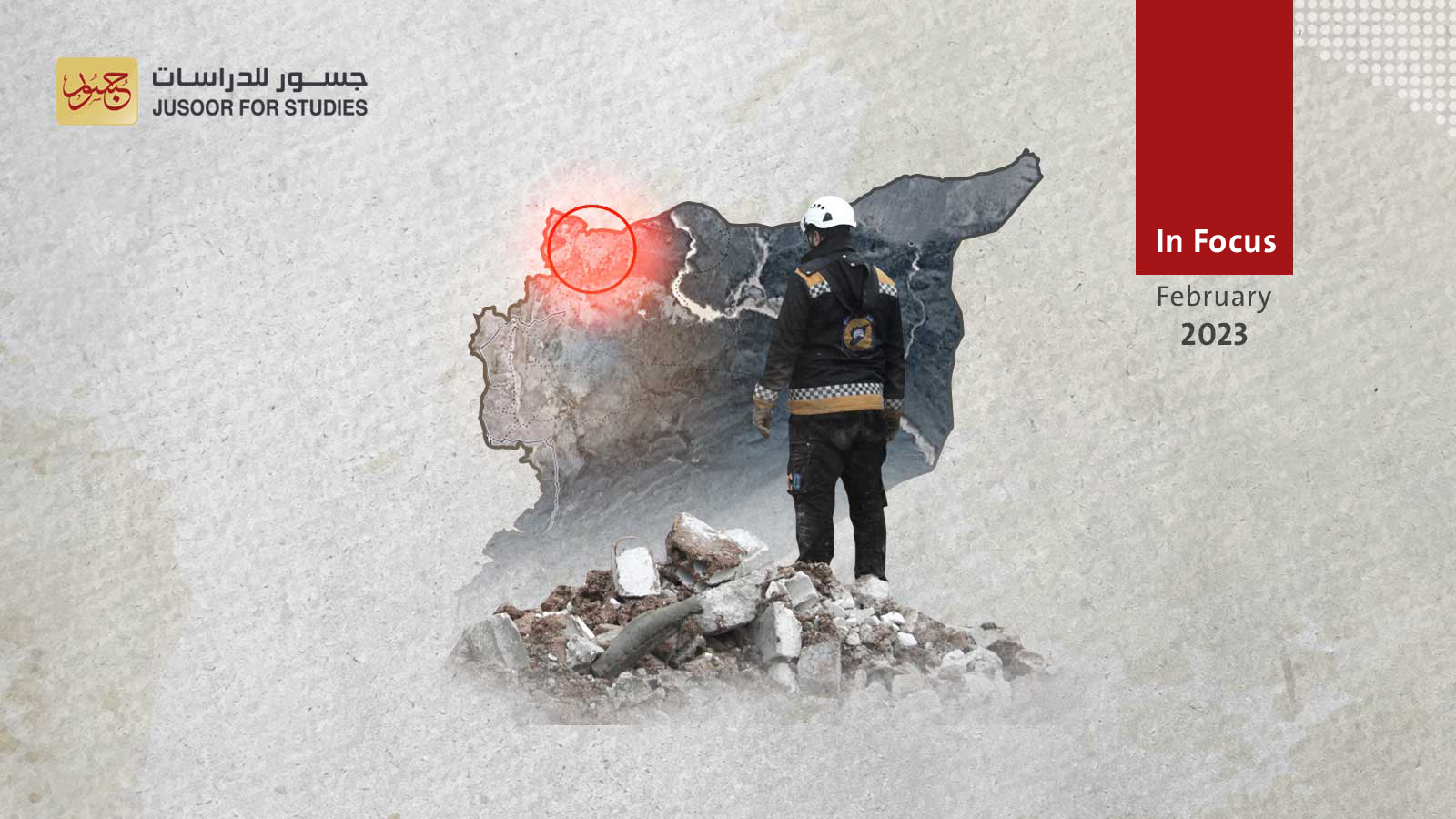Major Earthquake seriously affects northwestern areas of Syria
A series of earthquakes struck Turkey and Syria, as its after-shocks and t remors reached Lebanon, Jordan and Palestine, in one of the largest and most dangerous earthquakes in the world in a decade.
These successive earthquakes devastated cities and states in southern Turkey and northern and northwestern Syria. As for the latter, the magnitude-7.8 quake hit the camps, cities, and villages in the governorates of Aleppo, Idlib, Lattakia, Tartous, and Hama.
The most severe humanitarian impact in Syria was on the areas and camps housing internally displaced persons (IDPs) in Idlib and in western and northern Aleppo. This is mainly due to:
1- The structural weaknesses these areas’ buildings have, either because of ageing, poor construction design, or as a result of the previous bombings.
2- Stormy weather conditions such as snow, rain and low temperatures, which double the suffering of the afflicted people.
3- The lack of working local organizations and teams, given the size of the affected places and the number of afflicted people; especially since the offices and cadres of these organizations and teams inside Syria and in southern Turkey were also directly affected by the disaster.
4- The lack of logistical and technical capabilities of the operating local organizations and search and rescue teams, let alone the lack of heavy machinery, which made the humanitarian intervention process take longer and threaten the lives of the missing under the rubble.
The closed environment of the disaster scene, where the ability of countries or organizations to intervene and provide humanitarian support is almost impossible on the ground.
In the face of this difficult humanitarian situation in northwestern Syria, international support was completely absent from this region. It was left alone without any support of any kind; where it was originally a semi-disaster area even before the earthquake, as it suffers from a severe lack of services, and relies heavily on external assistance.
Saving hundreds of thousands of afflicted people in northwestern Syria requires urgent international humanitarian response. Moreover, as long as there are families under the rubble, the passage of time means the loss of more lives. This international response must overcome geographical barriers and related complexities, to find exceptional solutions to deliver aid by establishing air and land bridges, or even parachuting it on the afflicted people.
Priorities for urgent international humanitarian intervention include:
1- The arrival of teams of volunteers and experts to deal with the repercussions of the humanitarian disaster.
2- Urgent delivery of excavation equipment and heavy machinery to remove those trapped under the rubble.
3- The arrival of ambulance teams, vehicles and mobile hospitals to treat thousands of wounded and injured.
4- Delivering ready-made foodstuffs (that do not require preparation) to the afflicted, in addition to providing fresh drinking water.
5- Providing safe and warm shelters for hundreds of afflicted families whose homes were destroyed or cracked.
To help evacuating hundreds of victims, handing them over to their families and assisting in their burial.
These urgent needs should never be delayed by bureaucratic or political complications; as the civil teams alone cannot secure the required intervention, given the lack of time. Therefore, many practical steps must be taken by countries to intervene more directly to address the disaster, and consequently to provide all forms of support to humanitarian organizations operating in the northwestern Syria. Steps as such might enable these humanitarian organizations to respond better.








